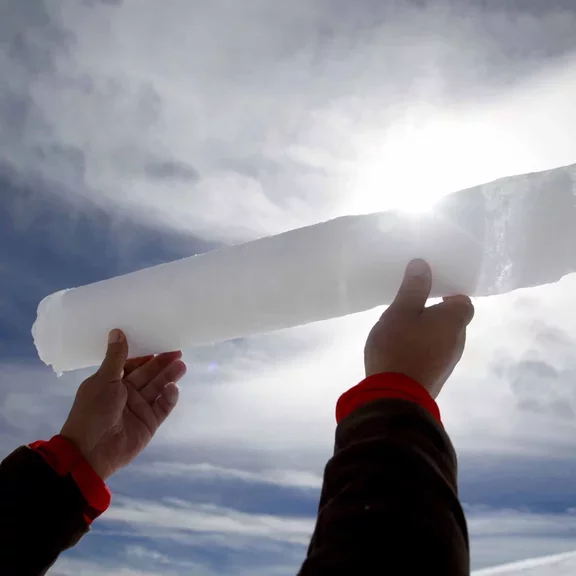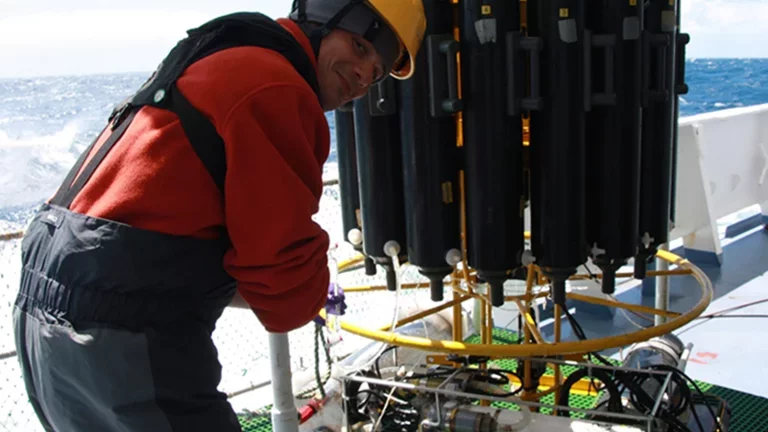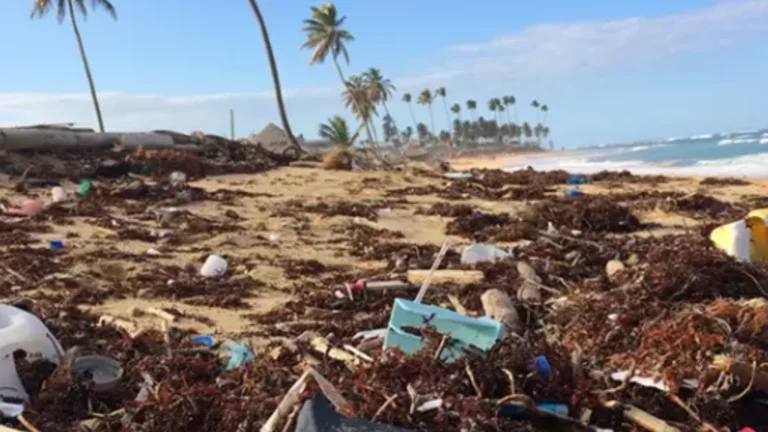“Ice Memory": Analyzing and Preserving Glacial Memory
Preserving a library of glacial ice cores, which contain a record of air composition, to analyze changes and their impact on the climate.
The Air Liquide Foundation supports “Ice Memory”, an international program to preserve the memory of glaciers threatened by climate change. Invaluable witnesses to changes in the air, climate and environment, mountain glaciers are essential tools for scientists and future generations of researchers.They provide a better understanding of past climate variations and allow to forecast future evolutions. This UNESCO-supported program aims to create an ice core sanctuary in Antarctica for future generations of researchers.
Preserving climate memory by archiving glaciers
The ice found in mountain glaciers contains a trove of information about changes in air composition, climate and the environment over time: temperature variations, atmospheric concentrations of greenhouse gases, aerosol emissions from natural sources, and manmade industrial pollutants. This data is invaluable for scientists. Unfortunately, in many regions of the world, glaciers are retreating inexorably as a result of global warming and these extremely fragile glacial archives are now in danger. We must act now if we want to preserve the geochemical information records stored in certain ice cores.
At this rate, it is projected that by the end of the 21st century, all glaciers found below altitudes of 3,500 meters in the Alps and 5,400 meters in the Andes will have completely disappeared.
Project Goal: Collect, analyse and preserve glacial ice cores to better understand changes in air composition
We still have only a piecemeal understanding of how air quality has changed over the centuries. An openly accessible database of atmospheric analyses will enable us to better understand the causes of these variations. The goal of the Ice Memory project is to take ice samples, analyze them using cutting-edge methods and create a sanctuary for glacial ice cores in Antarctica. The aim is to store and study ice cores today so that future generations can continue this analytical work and better understand climate change.
18,000 Years of climate archives contained in the Illimani glacier in Bolivia
-54°C Temperature of the cave in Antarctica at the French-Italian Concordia base, Antarctica (PNRA)
Ice Memory, preserving the precious heritage of ice
The work: drilling 20 glaciers in 20 years
Launched in 2015 by French and Italian glaciologists, the Ice Memory program aims to drill twenty glaciers over the next two decades; the first drilling missions have been completed in France, Bolivia and Russia. The work breaks down into three categories:
- collecting ice samples chosen for their scientific value. These samples belong to all of humanity, so a stable international governance structure will ensure that they are used sparingly and appropriately;
- performing analyses now on reference ice cores to acquire knowledge from today and set up a database that is open to the international scientific community;
- build a sanctuary in Antarctica for the long-term storage of valuable ice cores in a cave dug under the snow (a natural freezer at a cool -54°C) at the Concordia base jointly run by French and Italian teams.
Focus on
Ice core sampling, data analyses, preparation of the sanctuary: discover the project
1. What happens during ice core sampling?
Ice cores are cylindrical samples taken by drilling into glaciers. They contain valuable information about past variations in atmospheric air composition: traces of heavy metals, acids, pollutants or gases going back centuries. Over the past few decades, non-polar ice cores have been used to study the recent climate in great depth. In analyzing these samples, glaciologists discovered the intense acceleration of global warming and they were able to study the pollution caused by human activity or natural disasters. Four samples have already been collected as part of the Ice Memory project for eventual storage in Antarctica.
2. What is the goal of the analyses?
During each drilling mission, one of the cores is thoroughly analyzed using up-to-date methods to understand climate change and establish a reference database. This helps reconstruct changes to air composition and the climate, determine the main sources and causes of atmospheric pollution, and estimate their health impact by studying the nitrogen and sulfur cycles and sources of biomass combustion at the regional level. To do so the molecules and particles being emitted and trapped in ice cores must be identified (carbon soot, K+, NH4+, NO3-, Levoglucosan, Mannosan, Galactosan, S, Mn, Rb, and so on) and their changes over the time period must be assessed using the glacial archive for each sampling site. These analyses are performed by the ICE3 team from the Environmental Geosciences Institute (IGE) at Grenoble Alpes University1, under the direction of Patrick Ginot. Their work employs the cutting-edge analytical techniques found in the new IGE laboratory known as PANDA2, including: Various techniques for separation (GC, IC and ultrafiltration), detection (ICPMS), instrumental coupling (IC-MS, IC-MS/MS), and continuous-flow isotope-ratio mass spectrometry (CF-IRMS) Innovative techniques involving bacterial cultures The IGE team is one of only two teams worldwide to have mastered this range of analytical methods. All the data processed for the “health impact” part of the project are shared with another research program supported by the Air Liquide Foundation, Predict’Air.
- Various techniques for separation (GC, IC and ultrafiltration), detection (ICPMS), instrumental coupling (IC-MS, IC-MS/MS), and continuous-flow isotope-ratio mass spectrometry (CF-IRMS)
- Innovative techniques involving bacterial cultures
The IGE team is one of only two teams worldwide to have mastered this range of analytical methods. All the data processed for the “health impact” part of the project are shared with another research program supported by the Air Liquide Foundation, Predict’Air.
3. What exactly is a sanctuary?
The Paul-Emile Victor French polar institute (IPEV) and the national Italian Antarctic research program (PNRA) are working to build a storage cave at the French-Italian Concordia research station located 3,233 meters above sea level on the high Antarctic plateau. The average temperature there is -54°C, dipping down to -84°C in winter. Despite the remote and isolated nature of the site, the existing logistics chain and extremely stable temperature found ten meters deep in the snowpack make it the ideal location for storing ice samples and preserving climate archives.
What the Air Liquide Foundation is doing
The Air Liquide Foundation is contributing €250,000 to the costs of the core drilling missions in Bolivia and Russia, to the acquisition costs for containers for the storage cave in Antarctica and to the purchase of cutting-edge analytical equipment for the reference cores, centralized on the new IGE analytical platform, PANDA3.
2. The analytical platform dedicated to glacial archives (Plateau Analytique Dédié aux Archives glaciaires)
3. Plateau Analytique Dédié aux Archives glaciaires (Analytical Platform Dedicated to Glacial Archives)
Ice Memory
Testimony
"When the Air Liquide Foundation asked me to follow up the Ice Memory project with them and to provide scientific advice, I answered positively immediately. As Air Liquide's scientific and technical guarantor, I make sure that the scientific objectives are well achieved. Ice memory is a wonderful project that allows us to build up a scientific heritage. Thanks to this project, future generations will have access to the information contained in our glaciers that may disappear. This information will help increase our knowledge of local air quality trends. Patrick Ginot and his team at the Institute of Environmental Geosciences of the University of Grenoble Alpes are experts in the field of glaciers and the analysis of ice cores. They show great courage during their expeditions. They are the ideal partner for this project. I am very proud to make a small contribution to this scientific heritage. As an employee, the Air Liquide Foundation allows me to go beyond my usual work, to dream and to contribute to the future. It gives meaning to my work."
Anne-Laure Lesort, Campus Innovation Paris, Air Liquide



